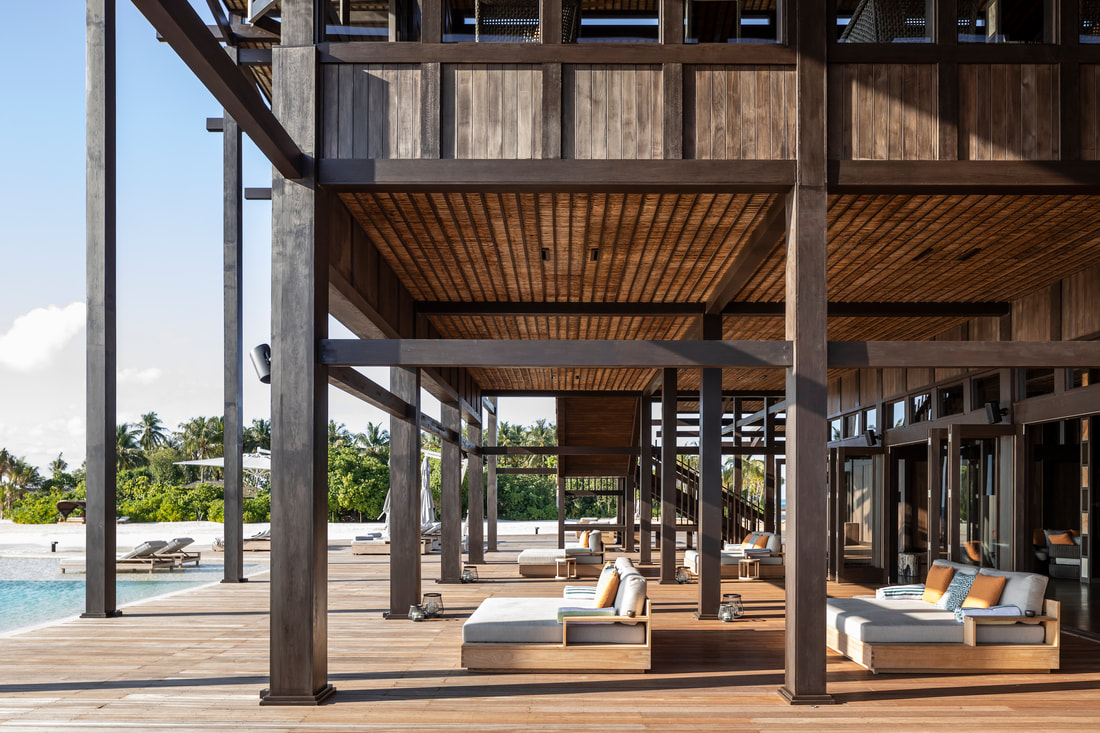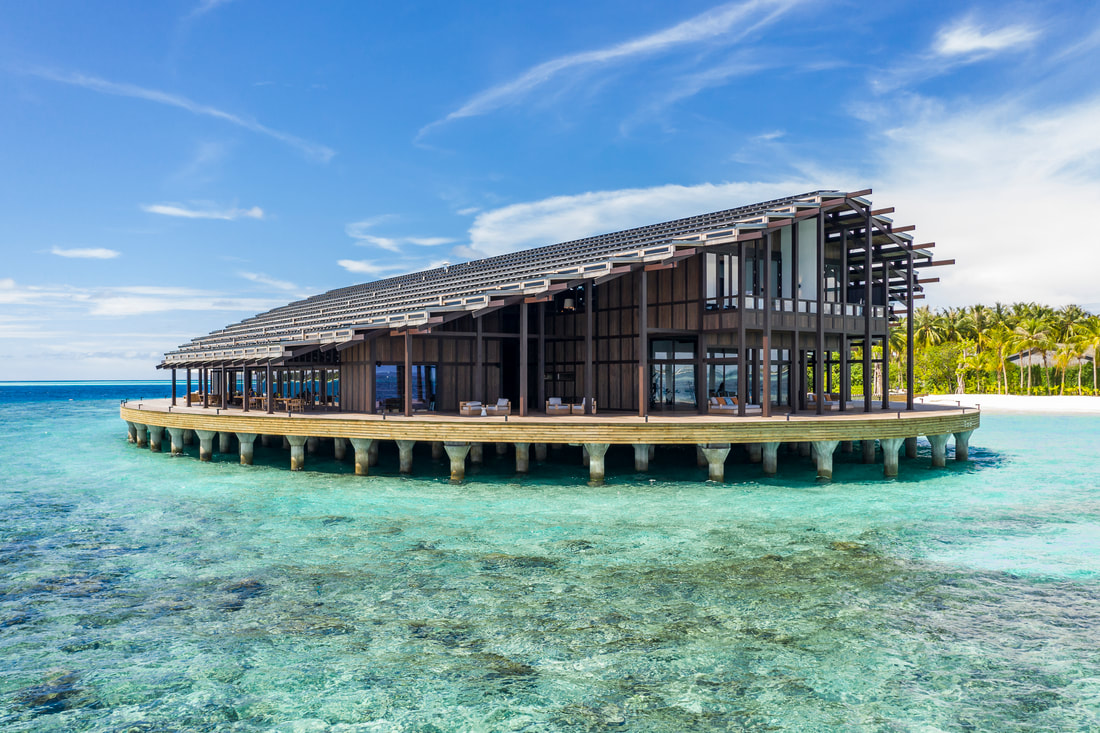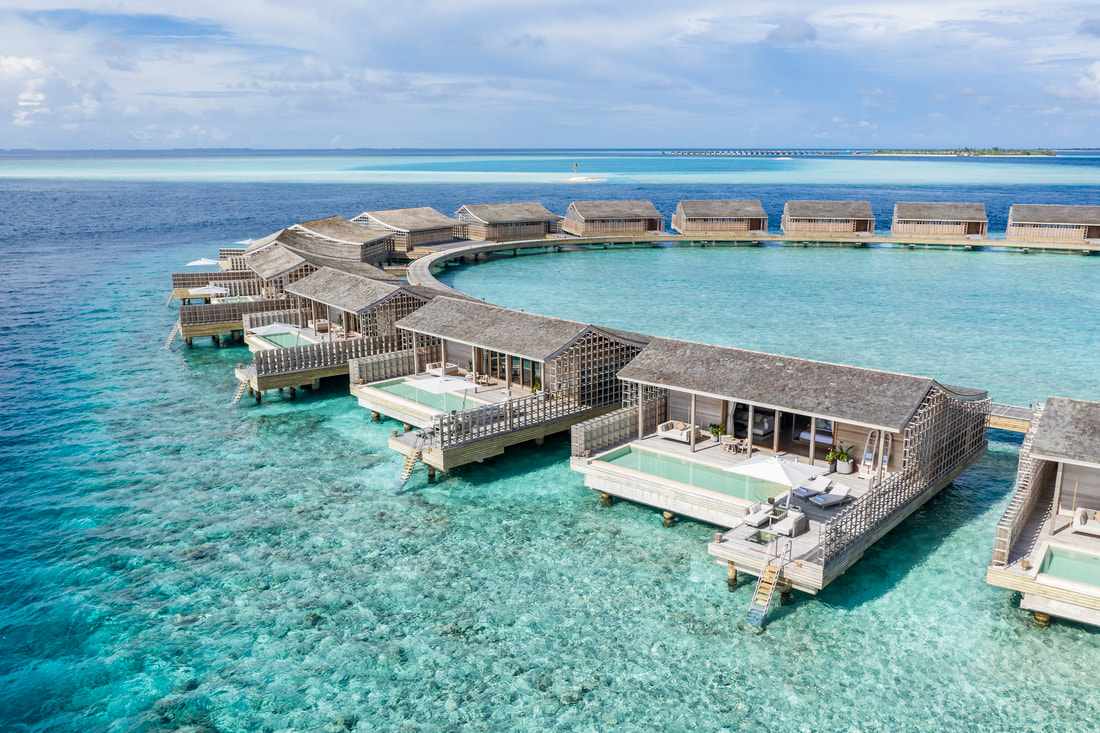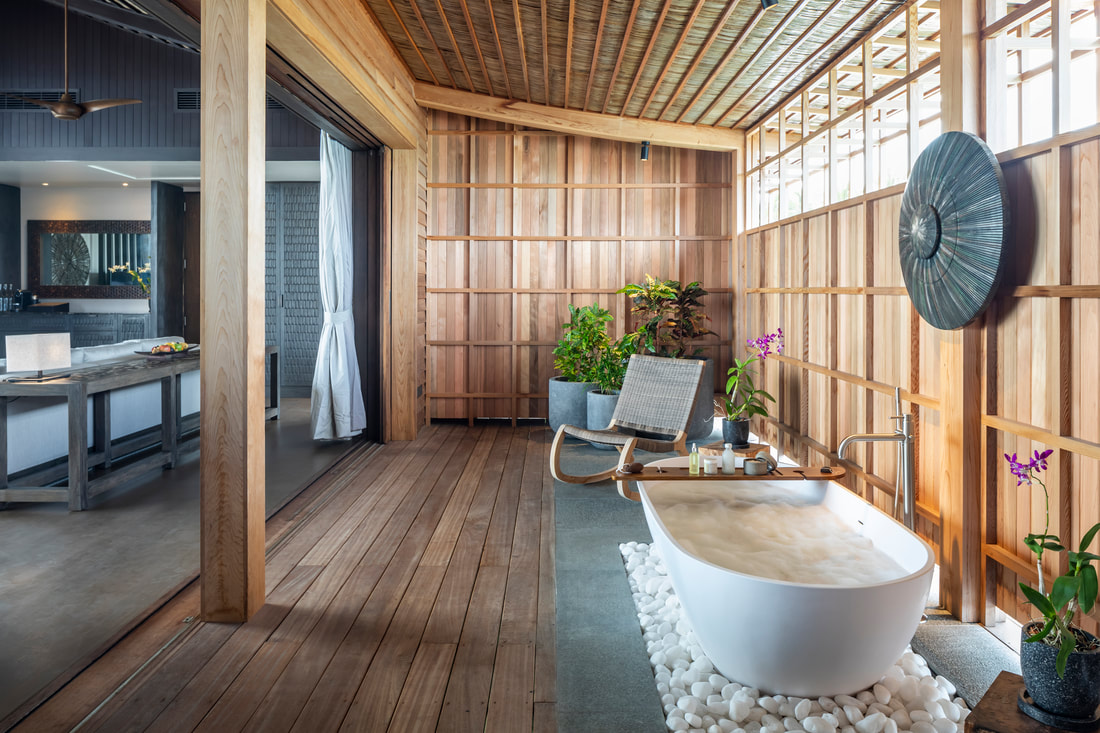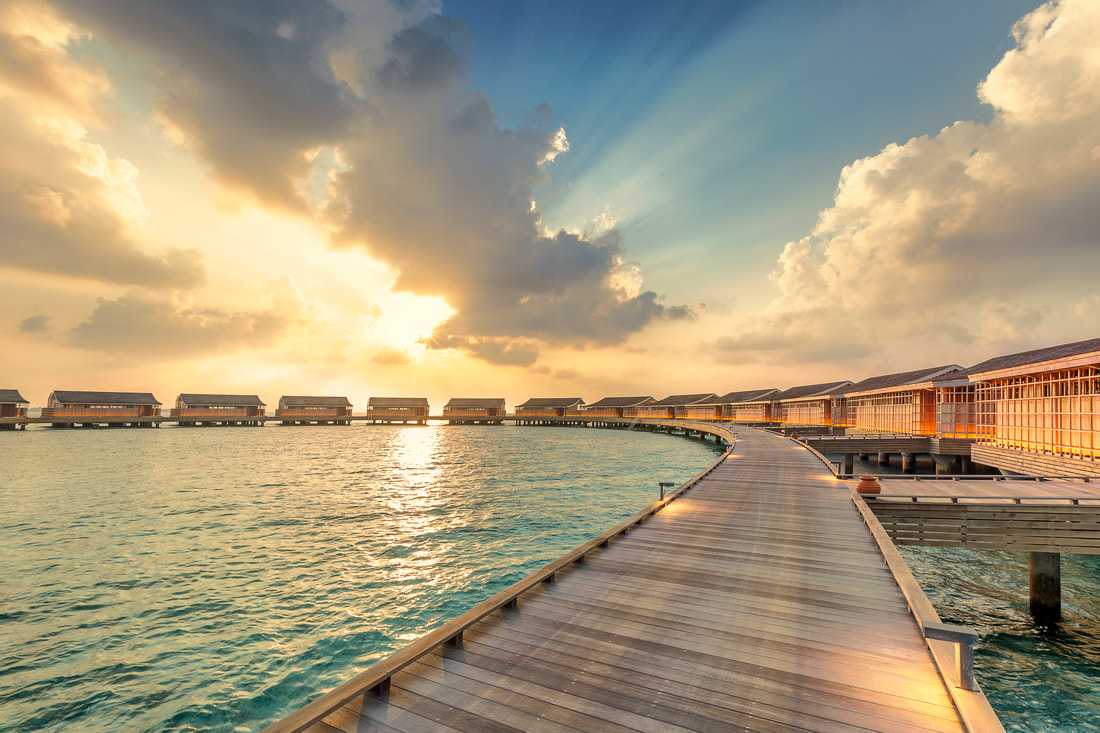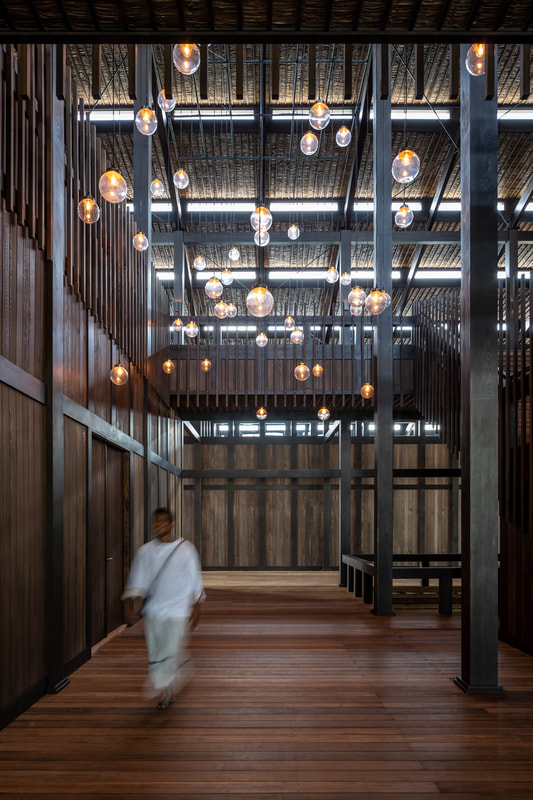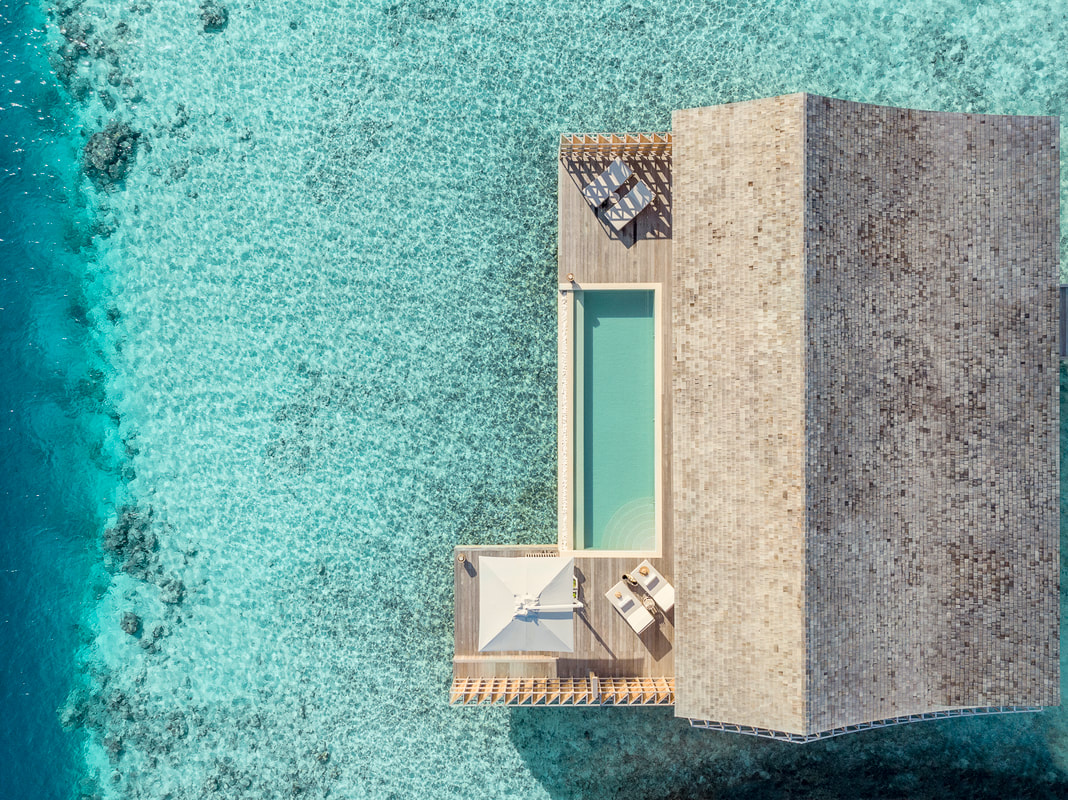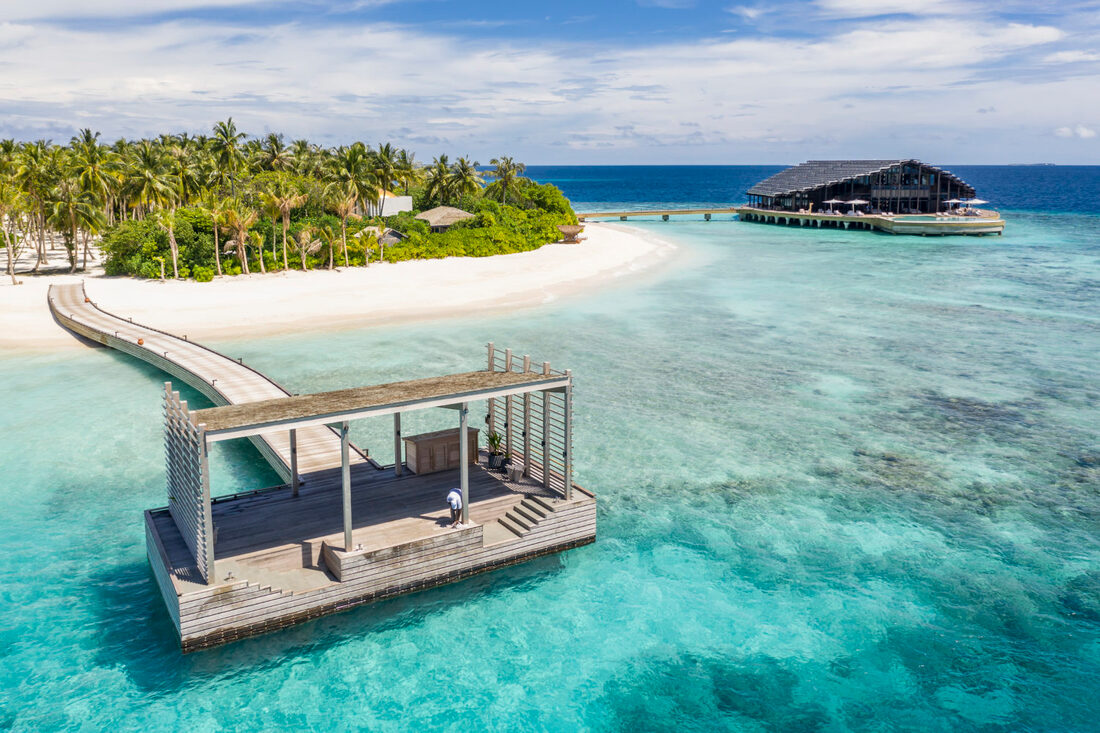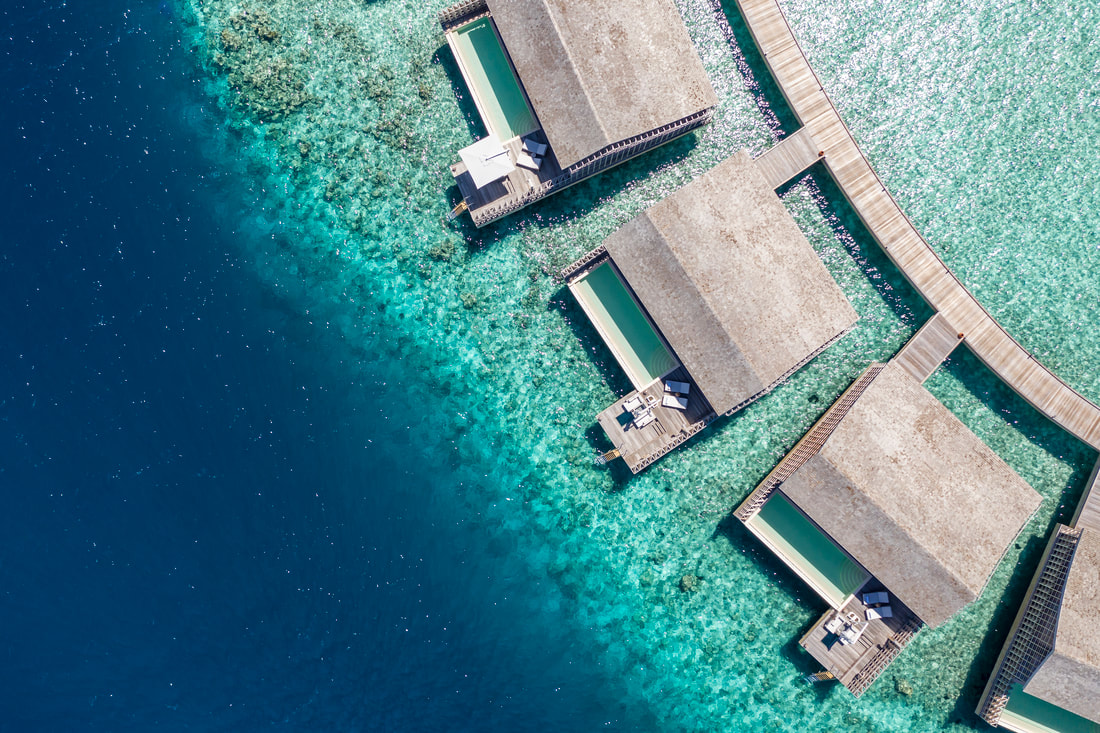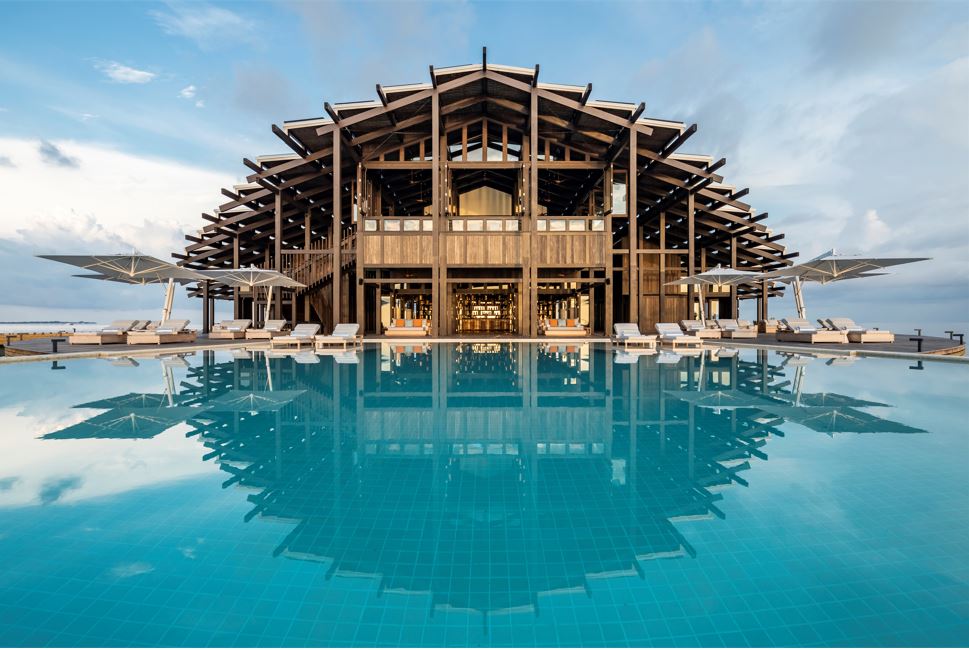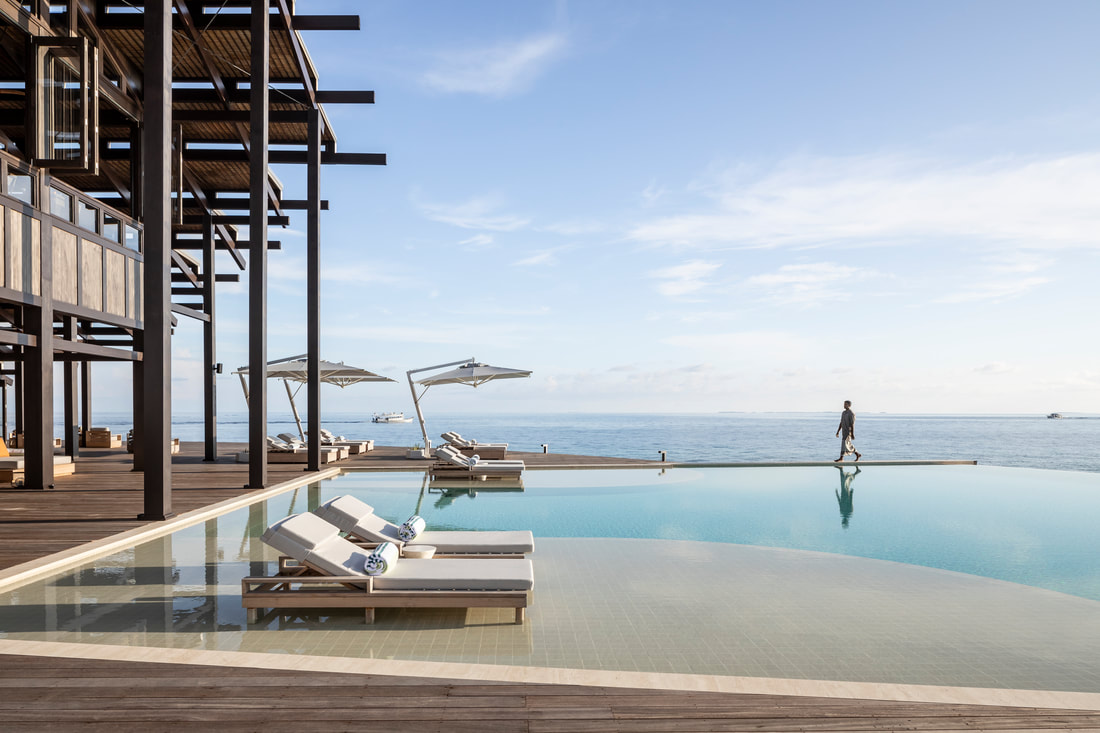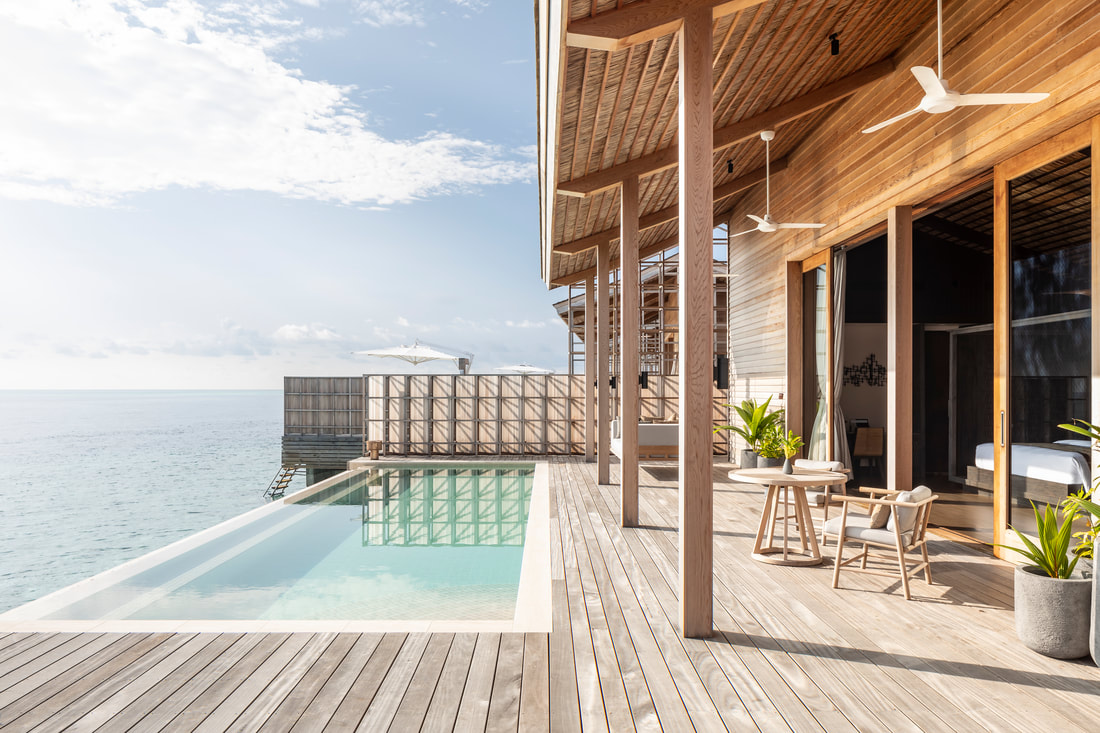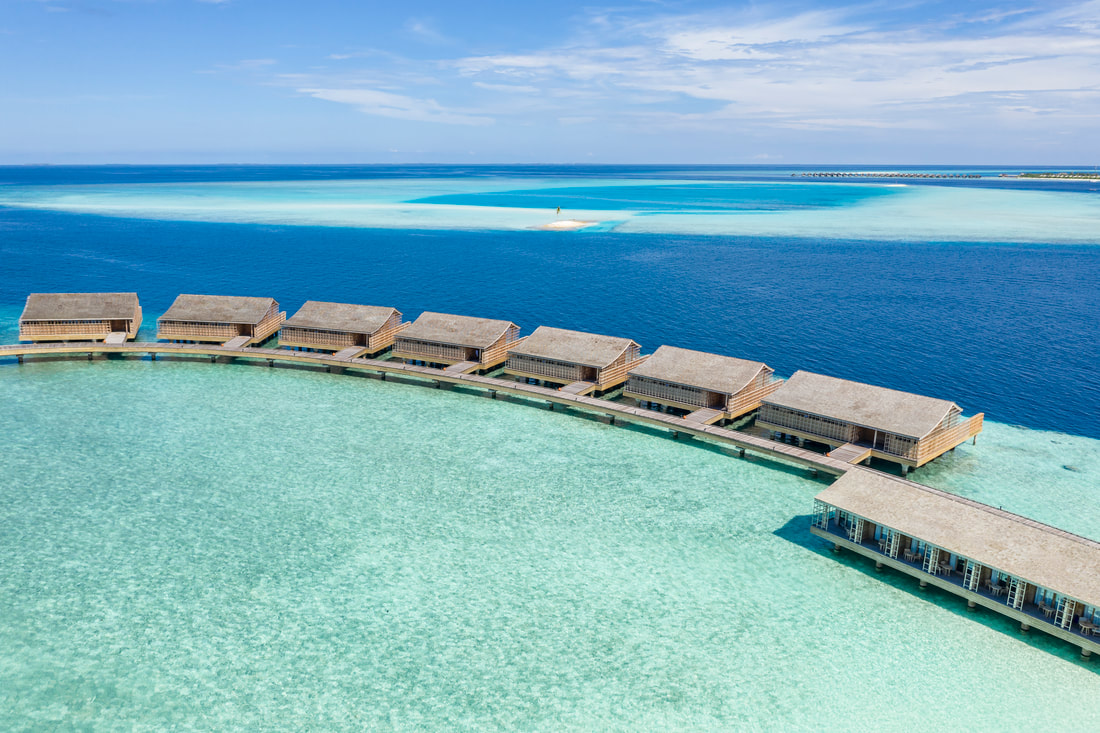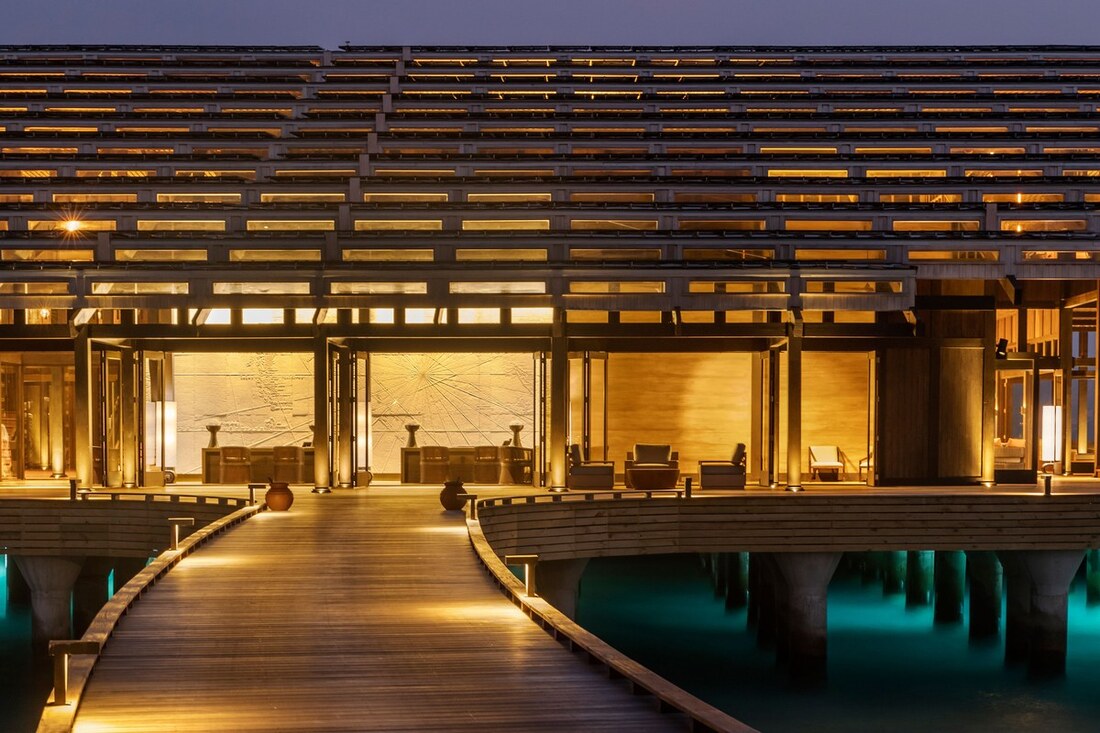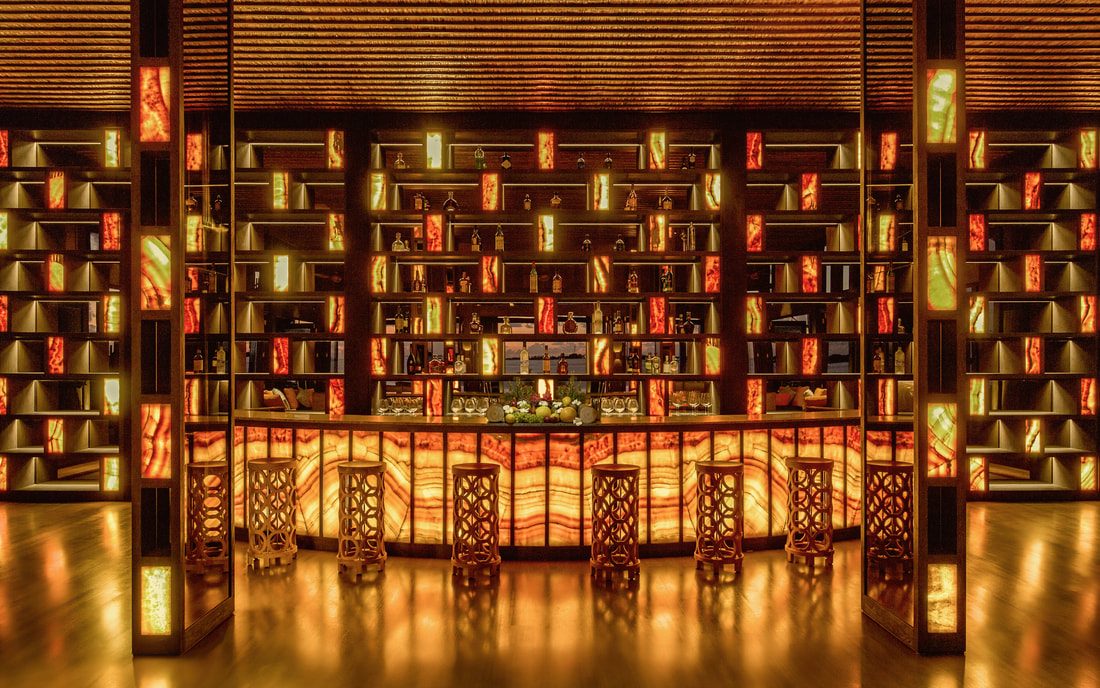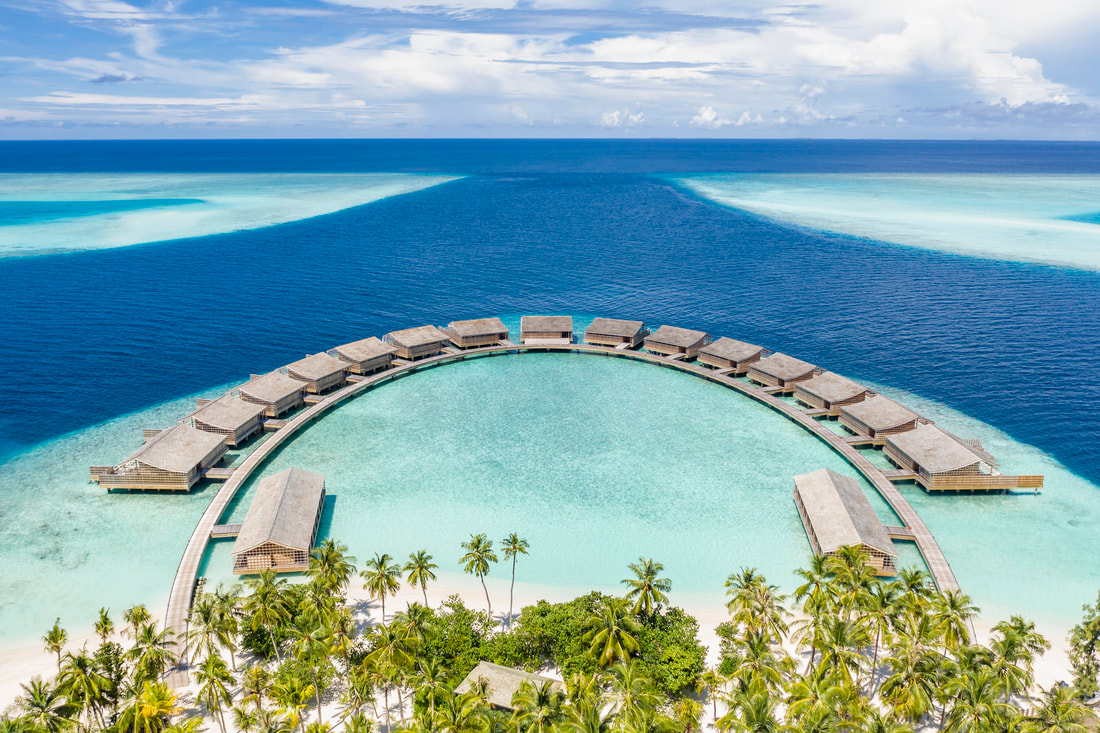|
Name
Kudadoo Maldives Private Island |
Program
Hospitality Resort & Spa |
Size
3 Hectare |
Location
Lhaviani Atoll, Maldives |
Status
Completed in 2018 |
Concept
The Maldives has the lowest average ground level of any nation, which makes for some of the world’s most beautiful beaches. It also makes Maldivians extremely sensitive to the change in sea levels. The burden of global CO2 reduction in the atmosphere lies primarily with a few large economies, but achieving carbon neutrality in this small island nation should be an inspiration for sustainable development in larger countries. There may be no better place in the world to showcase the future of sustainable tourism. All resorts in the Maldives are accessed by boats or seaplanes. It is unique to this island nation that you first discover your destination from the sky, which gives the visitors a stunning impression of the entirety of the architecture on the island.
The Maldives has the lowest average ground level of any nation, which makes for some of the world’s most beautiful beaches. It also makes Maldivians extremely sensitive to the change in sea levels. The burden of global CO2 reduction in the atmosphere lies primarily with a few large economies, but achieving carbon neutrality in this small island nation should be an inspiration for sustainable development in larger countries. There may be no better place in the world to showcase the future of sustainable tourism. All resorts in the Maldives are accessed by boats or seaplanes. It is unique to this island nation that you first discover your destination from the sky, which gives the visitors a stunning impression of the entirety of the architecture on the island.
|
Traditionally, solar panels are hidden in discreet areas in the Maldives and it does not have any other function, but in Kudadoo, photo-voltaic roof is decidedly visible and becomes the icon of the place. Visitors may instantly understand our aim to integrate the solar system into overall design concept. Solar concept should be as informative and persuasive as it is productive. At a glance, visitors can asses the size of solar roof, and then comprehend the relationship to the scale of the resort served by it. As you get closer, the design of the building reveals geometry that not only maximize production of electricity by its angle, but also minimize consumption of electricity by allowing sun light to come through the gaps between panels, minimizing the use of artificial light during the day. The system is producing 320kWp of electricity, which suffice to operate entire island without diesel fuel. The initial investment in the solar system to be recovered in 5 years by eliminating the need to import diesel fuel. This should be a fantastic example for other countries with similar climates.
|
|
Awards
German Design Award - Best Conceptual Architecture 2020 Interior Design Magazine - Best Resort 2019 Surface Magazine - Best Sustainable Resort 2019 Hospitality Design Award - Best Sustainable Resort 2019 Robb Report - Best of the Best 2019 Architectural Digest - Hottest Design: Hotel 2019 Conde Nast Travelers - Best New Hotel 2019 Luxury Travel Intelligence - Best New Luxury Resort 2018 Press
CNN travel Conde Nast Traveler Hospitality Design Archdaily IXDESIGN Travel + Leisure Tecture Mag |
|
|
The design of the surroundings takes inspiration from what was there before. The island had beautiful beaches, littoral plantings, coconut groves and interior forests. The basic plant structure, and the native plant palette were kept intact such as Sea Lettuce, Iron Wood, Coconut Palm, Beach Hibiscus and Screwpine. All guest accommodations are placed on the sand lagoon in effort to preserve those vegetations. There is a eco system in place attached to existing islands in the region and it was part of our crucial mission to minimize the change. In autumn, we expect to see bird migration come back to the island.
|
